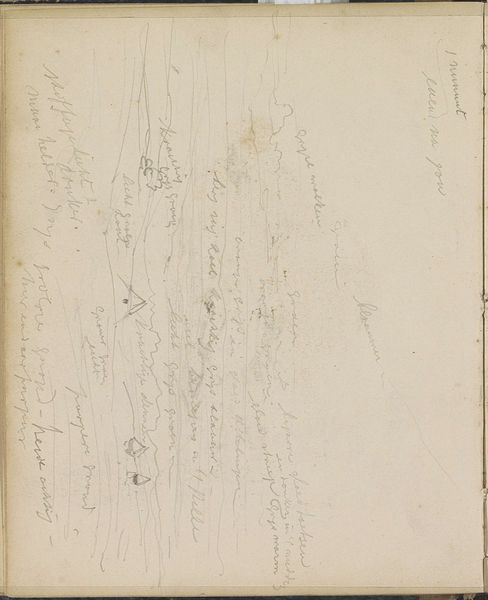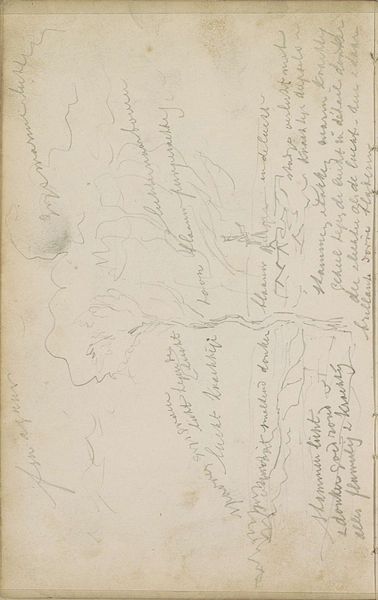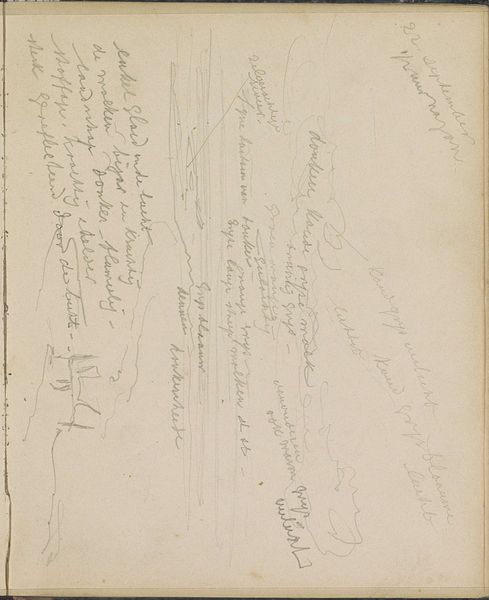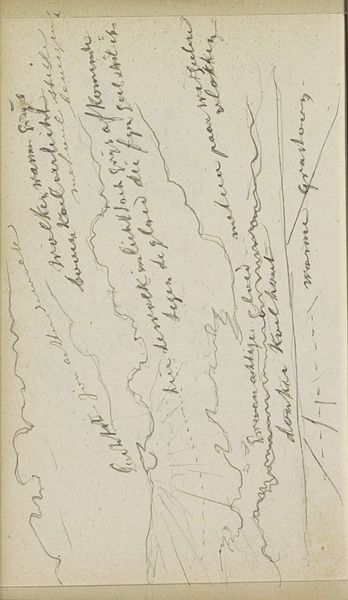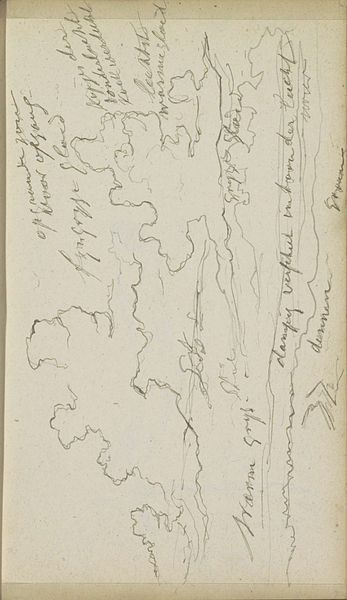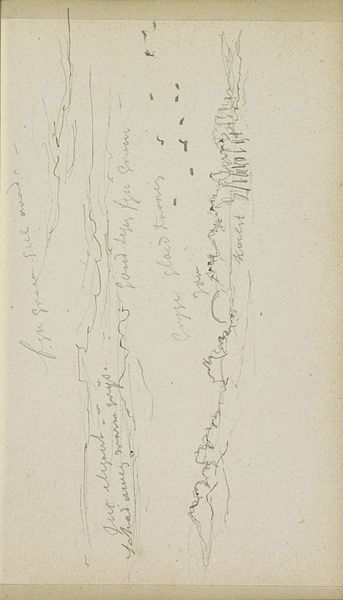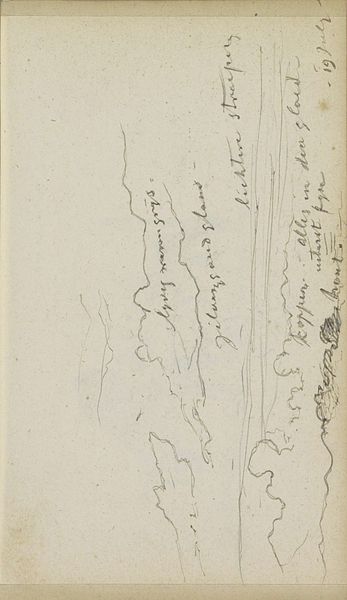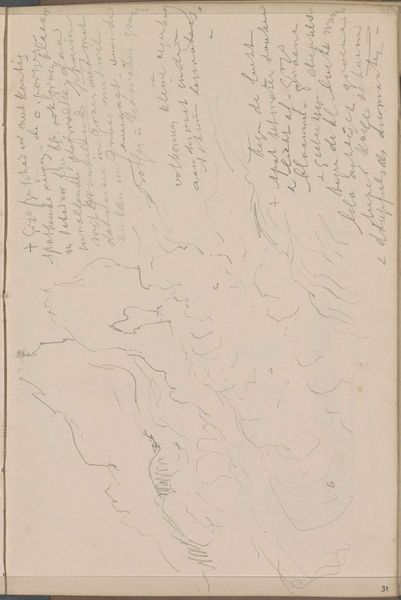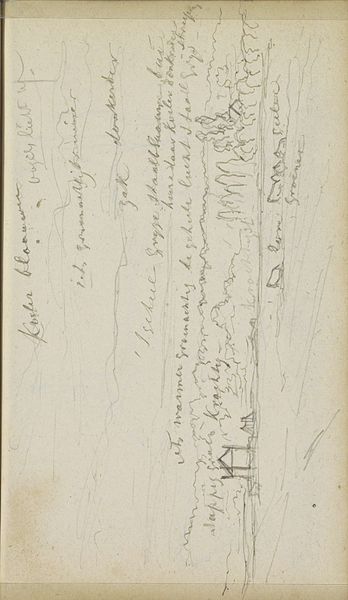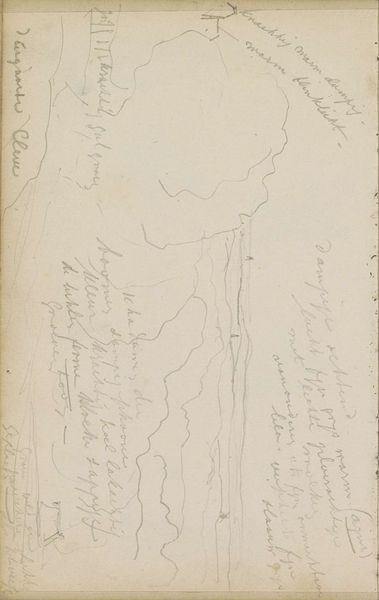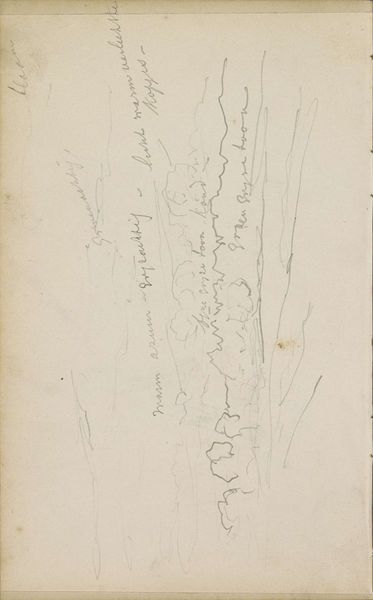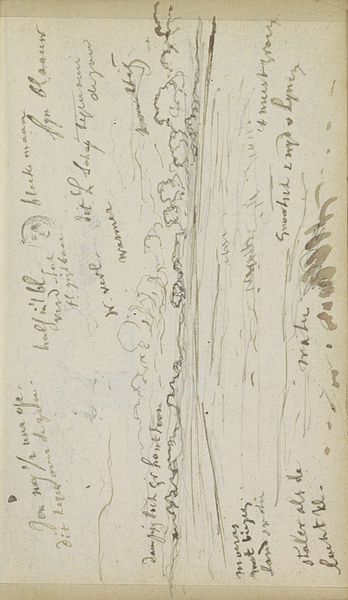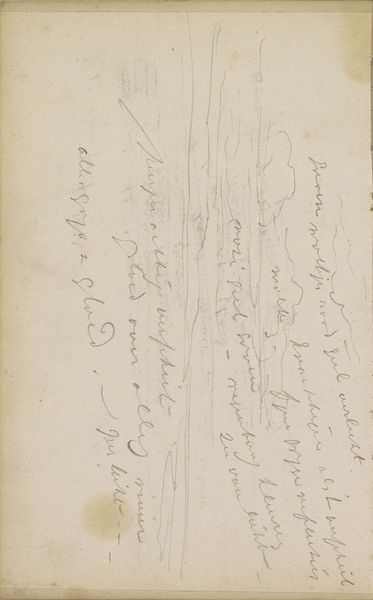
drawing, paper, pencil
#
drawing
#
landscape
#
paper
#
romanticism
#
pencil
Copyright: Rijks Museum: Open Domain
This is Johannes Tavenraat's "Wolkenlucht," a drawing now held at the Rijksmuseum, where the artist captures the sky and the landscape in delicate pencil strokes. Notice the horizon line, a motif that appears throughout art history, often symbolizing the boundary between the known and the unknown. In antiquity, the horizon might represent the edge of the world, a place of mystery and potential danger. In religious art, it can signify the divide between the earthly and the divine, as seen in many Renaissance landscapes where the horizon frames celestial events or figures. The shifting, ethereal quality of clouds mirrors the ever-changing nature of existence itself. Clouds, like dreams, are transient, elusive forms that capture our subconscious fears and hopes. The horizon offers a stable, grounded counterpoint. This interplay of transient and grounded elements invites the viewer to reflect on the delicate balance between stability and change, and the powerful subconscious forces at play in our perception of the world. Consider the cyclical progression of this symbol, the horizon, and how it resurfaces, evolved, and taken on new meanings in different historical contexts, echoing across cultures and centuries.
Comments
No comments
Be the first to comment and join the conversation on the ultimate creative platform.
